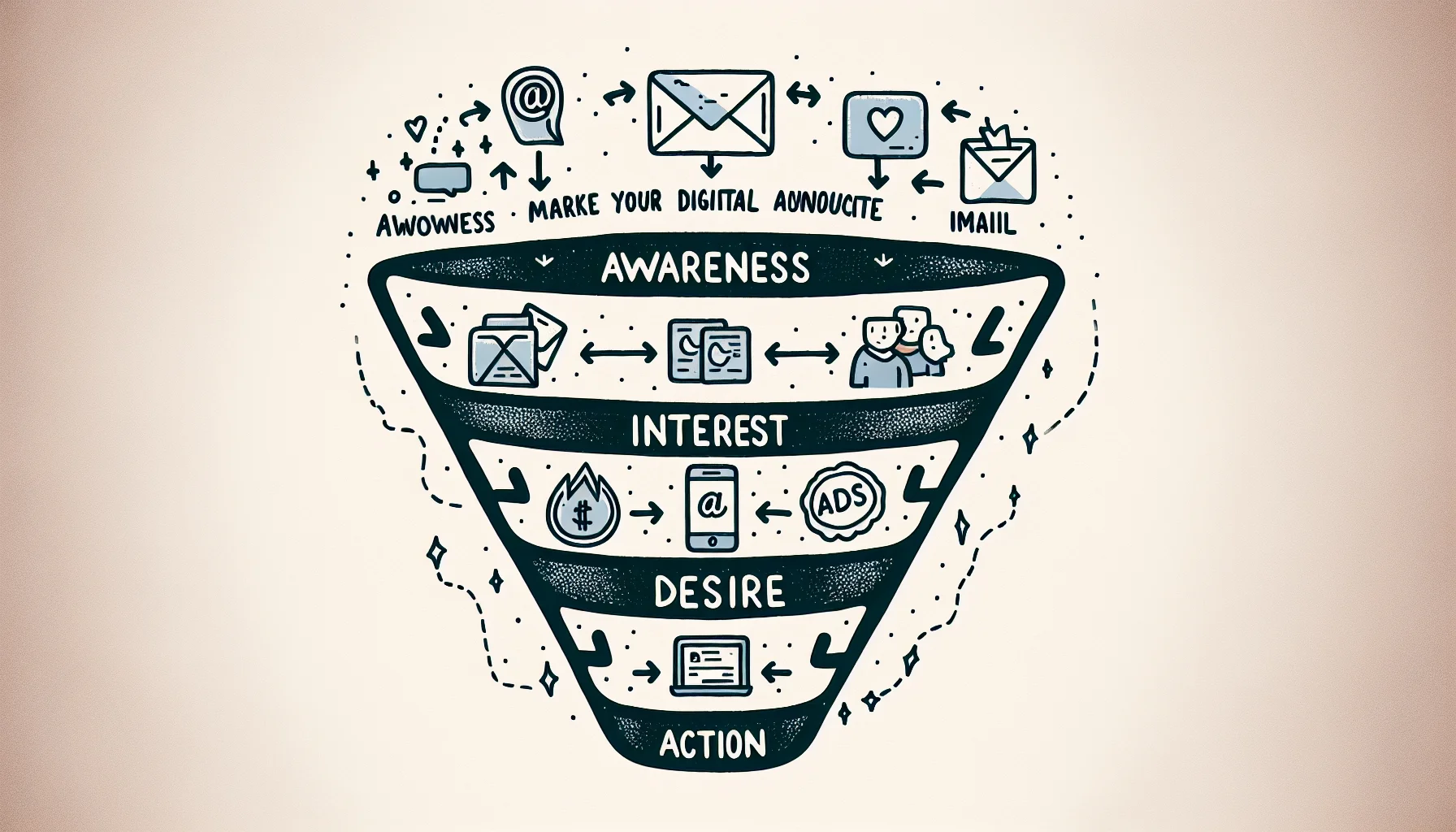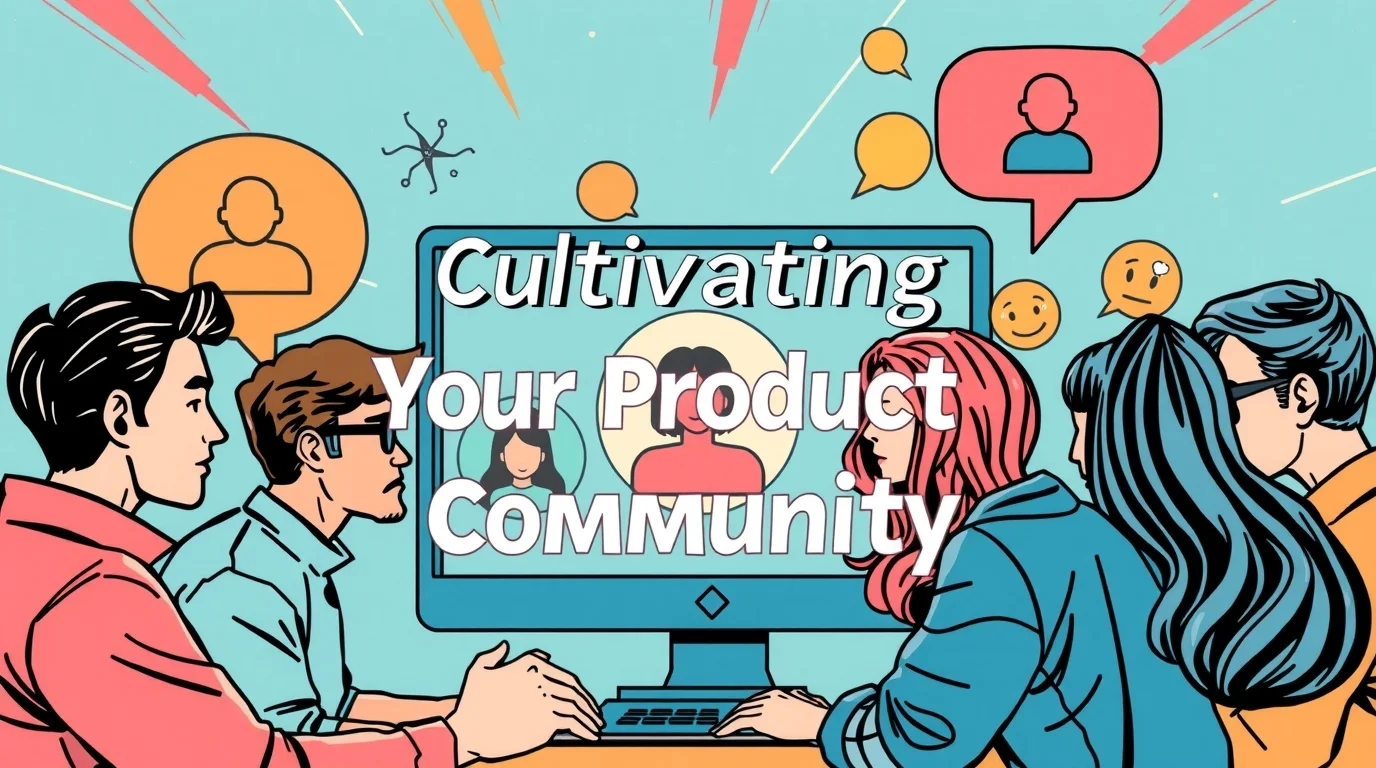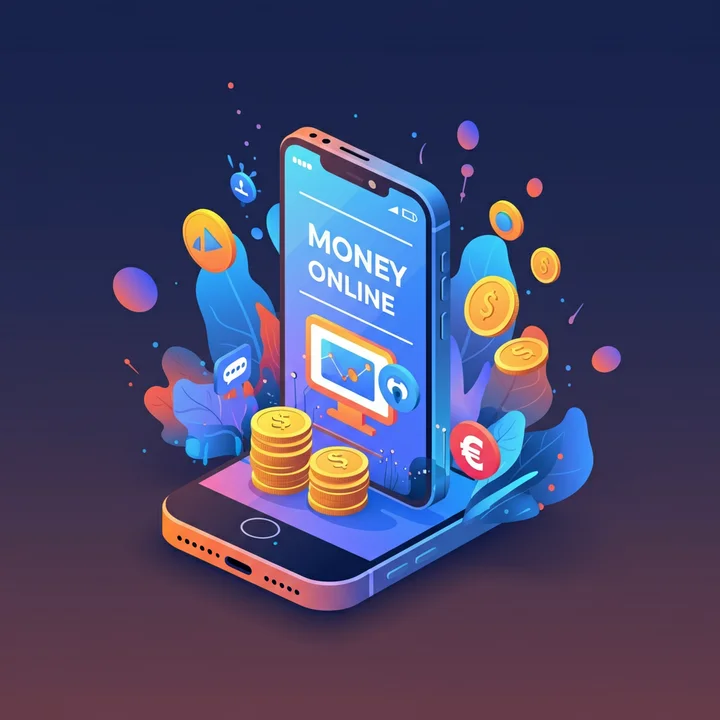If you're an ambitious entrepreneur, a passionate content creator, or a growing small business owner, you've likely contemplated how to generate consistent, scalable revenue online. One of the most effective and rewarding strategies to achieve your goals is by creating and selling digital products. Imagine transforming your knowledge, skills, and creativity into assets like eBooks, online courses, printables, software, and templates—offering a highly scalable income source with remarkably minimal overhead costs.
Unlike their physical counterparts, digital products are effortlessly created, delivered, and updated. Crucially, in our increasingly digital-first world, the demand for accessible online content, tools, and educational resources continues to surge.
This comprehensive guide will equip you with everything you need to know—from meticulously identifying profitable niches and expertly crafting high-quality digital goods to strategically marketing and selling them effectively. Whether you're a seasoned professional looking to diversify your earnings or just starting your journey to make money online, you'll discover how to transform your unique expertise into a reliable stream of sustainable income.
Could you please clarify what digital products are?
(Image Suggestion 1: An infographic with icons representing various digital products: an open book (eBook), a play button (online course), a printer icon with a sheet of paper (printable), a computer screen with code (software/app), a music note (audio file), and a camera icon (stock photo). Title: "The World of Digital Products"
Firstly, what is the true definition of a digital product? Simply put, a digital product is any intangible asset, piece of media, or tool that can be sold, distributed, and consumed entirely online. It requires no physical manufacturing, no shipping, and is typically delivered instantly or electronically upon purchase. This means once you invest your time in creating a digital product, you can sell it over and over again to an unlimited number of customers without incurring significant additional production or delivery costs per sale. This characteristic is what makes digital products a powerful source of passive and scalable income.
Common Examples of Digital Products:
eBooks: Comprehensive guides, in-depth how-tos, inspirational manifestos, or even fiction novels that can be downloaded instantly and read on any device.
Online Courses: Structured educational programs offering in-depth learning on any topic, often complete with video lectures, written modules, interactive quizzes, and downloadable worksheets.
Printables: Digital files (e.g., PDFs) designed for customers to print themselves, such as planners, journals, trackers, calendars, worksheets, templates, or wall art.
Software and Apps: Useful digital tools or solutions designed to cater to a specific audience or solve a particular problem (e.g., productivity apps, photo editing presets, website plugins, or budgeting templates).
Music and Audio Files: Royalty-free background tracks, sound effects, podcasts, audiobooks, meditations, or original compositions.
Stock Photography or Graphics: High-quality images, icons, illustrations, customizable templates (e.g., for social media, presentations), or fonts for creative use.
Worksheets & Templates: Fillable PDFs, Notion templates, Excel spreadsheets, or Canva templates for specific purposes.
Now that you have a clear understanding of what digital products are, let's explore the essential steps to create and effectively sell them.
Step 1: Identify a Profitable Niche—The Foundation of Your Digital Empire

Before you pour hours into creating a product, you must find a niche that perfectly combines your existing expertise, genuine passion, and, most importantly, clear market demand. The ultimate success of your digital product will largely come down to how well it addresses and solves your target audience's specific needs, desires, or pain points.
How to Find the Right Niche for Your Digital Product:
Assess Your Skills and Expertise:
What are you exceptionally talented at? What do you know more about than the average person?
Do you possess specialized knowledge in a particular field (e.g., coding, personal finance, specific software, fitness, or crafting)?
Do you have a unique skill or hobby that others might find valuable or want to learn?
Action: Brainstorm a list of 5-10 topics where you feel confident in your knowledge or ability to learn deeply.
Research Market Demand (Where are the problems/desires?):
Google Trends: See the search interest for your potential niche topics over time and identify trending subtopics.
Keyword Research Tools (e.g., Ahrefs, SEMrush, Google Keyword Planner): Discover what people are actually searching for related to your ideas. Look for search terms with decent volume but not impossibly high competition.
Online Communities: Explore Reddit forums, Facebook groups, Quora, and niche-specific online communities. What questions are people asking? What problems are they complaining about? These are often unmet needs.
Amazon/Etsy Best-Sellers: Look at popular eBooks, printables, or courses in adjacent niches to gauge interest.
Popular Niches (evergreen demand): Personal finance, health & wellness, marketing (digital, social media), graphic design, productivity, career development, specific software tutorials, hobby-based learning (e.g., knitting, photography, coding for beginners).
Action: Validate your initial ideas by looking for evidence of people actively seeking solutions in those areas.
Analyze the Competition (Friend or Foe?) :
Check Platforms: Browse existing digital product marketplaces like Gumroad, Udemy, Skillshare, Etsy, or even direct competitor websites.
Evaluate: Are there already many competitors? Is the market completely untapped?
Insight: A crowded market isn't necessarily a bad thing; it often signifies high demand and a proven willingness of people to pay for solutions in that area. Your goal isn't to be the only one, but to be better or different. Look for gaps, underserved sub-niches, or ways to offer unique value.
Action: Identify successful products and understand what they do well and where you could potentially improve or offer a unique angle.
Pro Tip for Niche Selection: Look for the "sweet spot" where your genuine passion and expertise significantly overlap with a clear, validated audience demand. When you truly care about your niche, you're not just creating a product; you're solving a problem you understand, which makes it far easier to create something valuable that genuinely resonates with your audience and generates sustainable income.
Step 2: Create High-Quality Digital Products—From Idea to Impact

Once you’ve confidently identified your profitable niche, it’s time to transform your idea into a tangible, valuable digital product. The absolute key to long-term success and customer satisfaction is ensuring your product offers exceptional quality and undeniable value.
Key Steps to Create Your Product:
Deeply Research Your Audience's Specific Needs:
Go beyond general market demand. Conduct detailed surveys, run polls in niche groups, interview potential customers, or analyze comments on competitor products. Pinpoint their exact pain points, desired outcomes, and what kind of solutions they genuinely seek. This ensures your product directly addresses their needs.
Action: Create an "ideal customer" avatar and list their top 3-5 challenges related to your niche. Your product should solve at least one of these.
Choose the Right Product Format:
Your product's format must align with its content and how your audience prefers to consume information or tools.
eBooks/Guides: Ideal for sharing comprehensive knowledge, step-by-step processes, or storytelling that's easy to consume at one's own pace.
Online Courses: Best for in-depth learning experiences that involve multiple concepts, require demonstrations, or benefit from structured progression (e.g., learning a new skill, mastering software).
Printables/Templates: Perfect for highly actionable tools that customers can use immediately (e.g., a daily planner, budget tracker, social media content calendar template, or resume template).
Software/Apps: For specific technical solutions or productivity enhancements.
Audio/Video: For tutorials, meditations, stock assets, or entertainment.
Action: Consider your content's nature and your audience's preference.
Invest in the Right Tools and Platforms:
Don't overspend initially, but choose tools that enable quality creation.
For eBooks & Templates:
[Suspicious link removed]: User-friendly for design, perfect for printables and simple eBooks.
Adobe Creative Suite (InDesign, Photoshop, Illustrator): Industry standard for professional design.
Google Docs/Microsoft Word: For basic text-based content.
For Online Courses:
Teachable/: All-in-one platforms for hosting courses, managing students, and processing payments.
Zoom/Loom/OBS Studio: For recording video lectures.
For software/apps (no-code/low-code):
For audio/music: Audacity, Adobe Audition, GarageBand.
Action: Start with affordable or free tools that meet your basic needs, then upgrade as your business grows.
Polish, Test, and Refine Your Product:
Minimum Viable Product (MVP): Don't aim for perfection on your first version. Create a "minimum viable product"—a" version with just enough features to satisfy early customers and validate the concept.
Gather Feedback: Share your MVP with a small group of beta testers (friends, family, early subscribers, or a small test audience from your niche).
Iterate: Collect feedback, revise, tweak, and polish based on user experience. Ensure everything is functional, easy to use, and meets expectations before your official launch.
Action: Plan a beta testing phase.
Add Value with Supporting Materials:
Elevate the customer experience and reinforce the value of your core product by including bonus resources.
Examples: quick-start guides, FAQs, checklists, cheat sheets, templates, bonus video walkthroughs, or access to a private community (Facebook group, Discord server).
Example: If your core product is an online course on "Smartphone Photography," you could include a bonus equipment checklist, downloadable cheat sheets for various camera settings, or exclusive access to a private Facebook community for students to share photos and ask questions.
Step 3: Market Your Digital Product—Get Seen, Get Sales!

Creating an exceptional digital product is only half the battle. To successfully sell it and generate sustainable income, you need a robust and targeted marketing strategy.
Leverage the Right Marketing Channels for Digital Products:
Build an Email List (Your Most Valuable Asset):
How: Collect email addresses through a compelling landing page, a pop-up on your website, or by offering an irresistible "opt-in freebie" (e.g., a free chapter of your eBook, a mini-template, or a quick-start guide related to your product).
Nurture: Regularly send valuable content, tips, and insights to your subscribers, building trust and authority. This pre-sells your audience.
Launch: When you launch your product, your email list is your direct line to your most engaged potential customers.
Action: Set up an email marketing service (e.g., Mailchimp, ConvertKit, ActiveCampaign) and create a compelling lead magnet today.
Utilize Social Media Strategically:
Platforms: Promote your product on platforms where your target audience spends their time (Instagram for visuals, X/Twitter for quick tips/insights, TikTok for short-form demos, LinkedIn for B2B/professional products, and Pinterest for visual search).
Content: Use engaging visuals, short video demonstrations of your product in action, testimonials, behind-the-scenes glimpses of your creation process, and content that directly addresses the problems your product solves.
Engagement: Don't just broadcast. Engage with your audience, answer questions, and build a community around your niche.
Action: Choose 1-2 platforms where your audience is most active and create a consistent content plan.
Partner with Influencers & Affiliates (Expand Your Reach):
Influencer Marketing: Reach out to micro-influencers or bloggers in your niche who have an engaged audience. Offer them a free copy of your product for review, or propose a sponsored post/video. Their endorsement can drive significant trust and sales.
Affiliate Program (for your product): Consider setting up your own affiliate program for your digital product. This allows other creators, bloggers, or influencers to earn a commission by promoting your product. It's a powerful way to scale sales without direct marketing effort on your part.
Action: Identify potential partners and craft a personalized outreach message.
Run Targeted Paid Ads (Accelerate Growth):
Platforms: Facebook Ads (for audience targeting based on interests/demographics), Google Ads (for capturing search intent, e.g., people searching for "how to create a budget spreadsheet").
Strategy: Start with a small budget, test different ad creatives, headlines, and audience segments. Analyze performance closely (cost per click, conversion rate, return on ad spend). Only scale campaigns that prove profitable.
Action: If the budget allows, learn the basics of ad platforms and run a small test campaign.
Leverage Content Marketing (The Long Game):
Platform: Publish valuable blog posts, informative YouTube videos, or insightful podcast episodes related to your product's topic.
Strategy: Provide immense value upfront, showcasing your expertise and subtly leading readers/viewers to your product as the ultimate solution. For example, if your product is a meal-planning printable, create blog posts featuring meal-prep tips and YouTube videos demonstrating easy recipes, and then include clear calls to action (CTAs) linking to your printable.
SEO: For written content, optimize for relevant keywords to attract organic search traffic.
Action: Commit to a consistent content creation schedule (e.g., one blog post or video per week).
Step 4: Choose the Right Platforms to Sell Your Digital Product
Selecting the optimal platform to host and sell your digital products is a crucial decision that impacts ease of access, payment processing, and customer experience.
Popular Platforms for Selling Digital Products:
For General Digital Products (eBooks, Templates, Small Courses):
Gumroad: Extremely popular for creators. It's easy to set up, handles payments and delivery, and offers an integrated affiliate system. Ideal for selling a variety of digital goods without a full website.
Etsy: Perfect for selling printables, digital art, or creative templates to a broader audience already looking for unique items. It's a marketplace, so built-in traffic is a plus.
For Online Courses:
Teachable/: Industry leaders for hosting and selling online courses. They provide robust features for course creation, student management, payment processing, and drip content.
For Building Your Own Website/Store:
Shopify: While known for physical products, Shopify can host digital products with the right apps. It offers powerful e-commerce features and customizability.
WordPress with an e-commerce plugin (e.g., WooCommerce): Gives you complete control over your site. Requires more technical setup but offers ultimate flexibility and no transaction fees beyond payment processing.
For Software/Apps:
Major App Stores: If you're selling mobile apps, list them on the Google Play Store (for Android) or Apple App Store (for iOS).
Dedicated Software Marketplaces: For desktop software or plugins, consider marketplaces relevant to your niche.
Action: Research each platform's features, pricing models (transaction fees vs. monthly subscriptions), and ease of use to determine the best fit for your specific product and business goals.
Step 5: Build a Community Around Your Product—Long-Term Success

Creating a loyal, engaged community around your digital product or brand is a powerful long-term strategy that can significantly elevate your brand, drive consistent sales through word-of-mouth, and provide invaluable feedback for future products.
Engage with Your Customers and Foster Community By:
Hosting Webinars or Live Q&A Sessions: Regularly schedule free webinars or live Q&A sessions where you answer FAQs related to your product, provide valuable tips, and demonstrate advanced uses. This positions you as an expert and builds loyalty.
Creating a Private Community: Use platforms like Facebook Groups, Discord servers, or dedicated community platforms (e.g., Circle) to connect with your customers directly. Encourage them to share experiences, ask questions, and support each other. This creates a sense of belonging and boosts retention.
Actively Gathering Feedback and Testimonials:
Surveys: Send post-purchase surveys to understand customer satisfaction and identify areas for improvement.
Reviews: Actively ask satisfied customers for reviews and testimonials.
Leverage Social Proof: Feature these glowing reviews and testimonials prominently on your website, product pages, and marketing materials. This builds immense trust with new potential customers.
Providing Excellent Customer Support: Be responsive and helpful to customer inquiries. A positive support experience can turn a one-time buyer into a loyal advocate.
Transform Your Knowledge Into Profit: Your Digital Product Journey Awaits
Creating and selling digital products is not only a fantastic way to earn passive income and build sustainable income streams but also an incredibly rewarding avenue to share your unique talents, knowledge, and passions with a global audience. With a clear strategy, the right tools, a consistent approach, and a little patience, you can absolutely build a thriving online business that supports your financial goals and genuinely resonates with your target audience.
Remember, the key to success in digital product creation is often to start small, validate your ideas, and remain consistent in both creation and marketing. Identify a profitable niche that excites you, craft a high-quality product that solves a real problem, and relentlessly engage your audience through targeted marketing campaigns.
Are you ready to take your first exhilarating step toward financial freedom and truly make money online on your own terms? Start brainstorming your first digital product idea today and watch as your expertise and creativity transform into tangible income!



